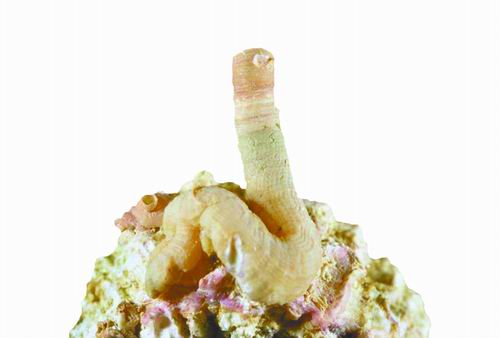
A conch that can fire a net of mucus to prey on
Recently, scientists discovered an interesting type of conch in the waters off the Florida Keys. The conch seems to have been "inspired" by Spider-Man, being able to weave webs to hunt by firing mucus, then swallowing food along with mucus and then recycling the mucus.
The conch was found on the hull of an abandoned U.S. Navy ship called General Hoyt S. Vandenburg, hence the name Thylacodes vandyensis. In order to cultivate corals and develop tourism, the decommissioned ship was sunk in the waters of the Florida Keys and once became the world's largest artificial coral reef.
Dr. Ludiger Billell of the Field Museum in Chicago, USA, once dived here and saw this kind of conch that he had never seen before, and since then he has paid a lot of attention and research, and has made many new discoveries. Birrell, who has been studying conchs for more than 20 years, said that this conch is larger than most conchs, and its larvae can crawl freely, and when they become adults, they will find hard surfaces such as rocks or corals, fix their shells on them, and no longer move. "This conch has another pair of antennae at the bottom of the body, and it is this pair of antennae that can emit mucus." Billell said.
Whenever a new species is discovered, scientists often declare it in a state of "endangerment", after all, species that have rarely been seen before are of course very rare. But the conch found this time is different, and its number increases very quickly. Moreover, scientists have found that the conch is not very "pleasant" with the coral, and the slime it emits may cause damage to the local coral reef.
So far, the conch has only been found in this artificial reef and has not yet spread to other natural corals. Scientists have shown through DNA testing that the conch's closest relatives are from the Pacific Ocean, and they may have sneaked here by "lurking" in the sewage at the bottom of the ship or attaching to the hull. Coral reef ecosystems gradually formed on the sunken hulls here, and there were no predators, so it provided the perfect settlement for these wandering conchs. (Compiled by Erin)
China Science Daily (2017-04-14 4th Edition Nature)